Kailash Mansarovar Yatra is a pilgrimage that is visited by thousands of people every year. It goes to the core of Tibet, high mountains, lake pilgrimage grounds, and monastic sites.
Pilgrims from the whole world visit Kailash to experience peace, purification, and spiritual feeling. This blog will explore what to see during the Kailash Mansarovar Yatra.
Whether it is Mount Kailash, the quiet waters of Lake Mansarovar, the beautiful Tibetan culture, or the fluttering prayer flags, each step leads you to a spiritual journey.
Mount Kailash: The sacred Home of lord Shiva
Kailash is not an ordinary mountain; it is a destination that would make a difference in the lives in terms of faith and mystery. It is 6,638 meters above sea level; it is believed to be the home of Lord Shiva.
What is more exciting about it is that nobody has ever tried to climb it because it is considered as being too holy to climb.

Other religions that visit Kailash are the Hindus, Buddhists, Jains, and Bons, who view this mountain as sacred.
People who come here for the purification rituals, to purify their souls, circumambulate on the regulative Kora around the mountain. This ritual washing off the sins gives a sense of inner peace.
Lake Mansarovar: The Sacred Lake
Lake Mansarovar is one of the highest freshwater lakes in the world. It is crystal clear water that is magical.
According to the Hindu scriptures, Lord Brahma gazed on this lake in his thoughts, and thus it was referred to as the Manasarovar manas (mind). Pilgrims dip or drink water to believe that this cleanses the body and the soul, too.
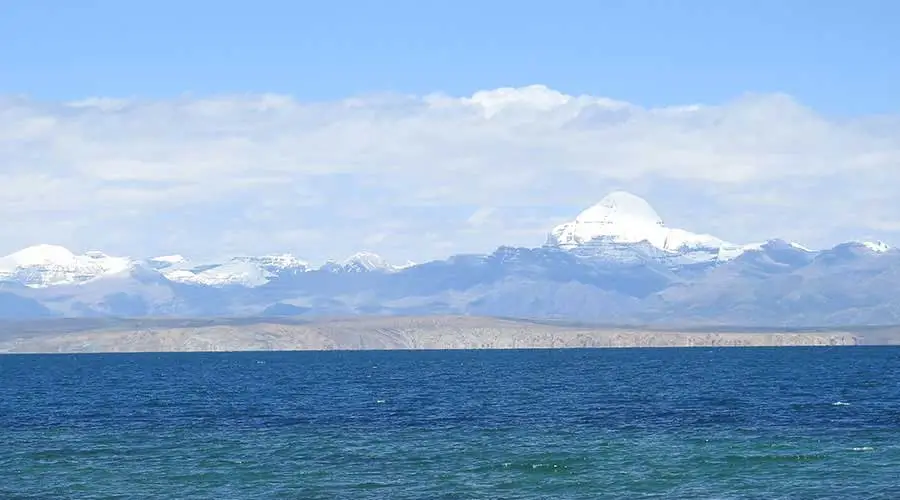
The mountains surrounding the lake are beautiful during sunset and sunrises as the water reflects the sky’s colors. The spiritual and peaceful feeling of sitting by Lake Mansarovar is a good one.
Rakshastal Lake: The Demons’ God Lake
On the other side is the Rakshastal, which is filled with mystery and legends, and it is near Lake Mansarovar. Rakshastal is dark and eerie, unlike the holy waters of Mansarovar, and there is no life around it.
This lake is said to relate to the demon king Ravana, who went into meditation in the lake in a bid to gain strength from lord Shiva.
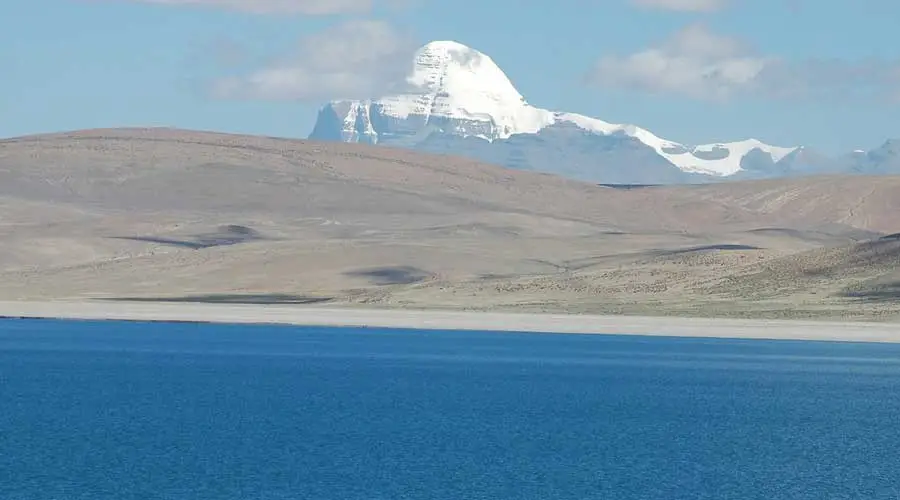
The lake is commonly labeled the Lake of Demons. Even nowadays, people of the region think that its salty water is not drinkable, unlike that of Mansarovar, that are pure.
Yam Dwar: The Spiritual Gateway to the Parikrama
To reach Mount Kailash, all the pilgrims must enter through Yam Dwar or the Gateway of the God of Death. This is said to be the part where he or she shuns worldly things before starting the holy expedition around Kailash.
Pilgrims also learn to pray here so that they can get a secure and successful parikrama (Kora). The site itself is rather simple as it is made of stone buildings, and there are prayer flags that are dancing in the air, but the mood is extremely spiritual.
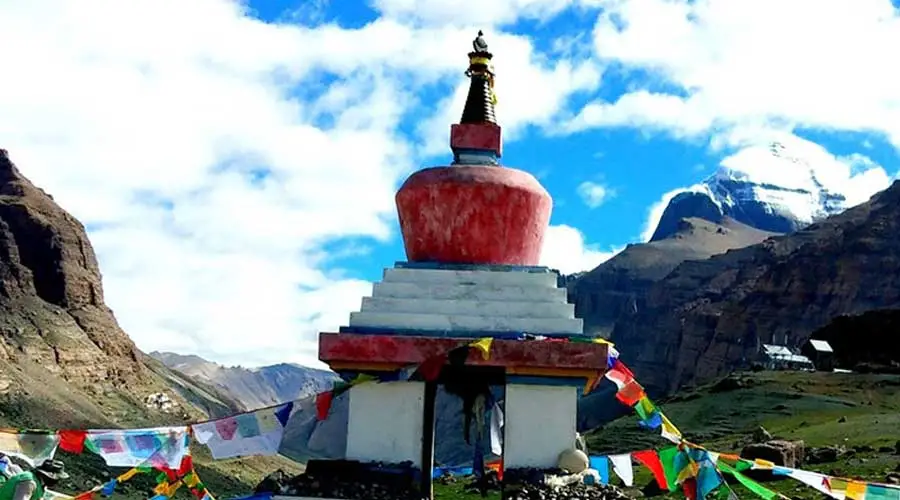
Passing through Yam Gate is taking a chance to enter the other reality, in which you can take each step and come closer to Mount Kailash and inner peace.
Dolma La Pass: Highest Point of Kailash Yatra
The highest point of the Kailash Mansarovar Yatra is Dolma La Pass, which lies at about 5630 meters. Getting here is an intense physical effort, but also a spiritually enriching experience.
The air in air turns thinner as you ascend, and each step seems to be as heavy as there is no view to seemingly compensate for the heavier steps.
The viewpoints of the pass include snow-capped mountains seen endlessly on one side, the zigzag railings of the parikrama below on one side, and the distant glacial valleys on the other hand.
Pilgrims also visit to pray to Dolma, the deity of longevity and safety, to obtain the strength to undertake the rest of the journey.
Reaching Dolma La, you are impressed, exhausted, and in a sense blessed by nature and its god
Gauri Kund: The Lake of Compassion and Devotion
Gauri Kund is a religious point during the Kailash Yatra, which is close to the foot of the sacred Mount Kailash. Pilgrims come to this natural hot spring to take a holy bath. They believe thatthe pure waters of Gauri Kund have the capability of purifying the body and soul.
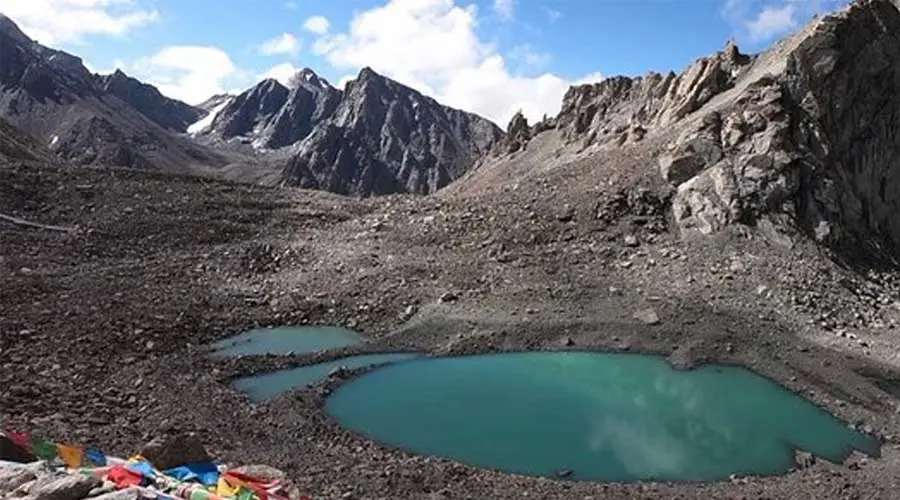
There are local myths that Goddess Parvati, or Gauri as she was also known as bathed here, which explains some of its spiritual importance.
Monasteries on the Route: Dirapuk and Zuthulpuk
The Kailash Mansarovar Yatra is significant because of the two spiritual monasteries of Dirapuk and Zuthulpuk.
One of the first points where pilgrims put their feet after the hardest part of the route, the Dirapuk, lies by the northern side of the Kailash.
It is a simple yet divine temple of the monks and where the monks sing, pray, and bless. A great number of pilgrims take pause here to recollect themselves and meditate, and to enjoy the calm.
The next critical spiritual place is Zuthulpuk Monastery, farther along the way. It is also an attractive site since it is located between the mountains and valleys with a beautiful view around it.
Prayer flags wave in the air, and they provide a colorful contrast in the white snow and rocky terrains.
By visiting these monasteries, pilgrims become close to the Tibetan Buddhist culture. One can feel the piety of the monks, and touch an experience, which involves inner world peace and takes place under the complications of the difficult path.
Get details of the Packing list for the Kailash Mansarovar yatra
Asthapath and Nandi Parvat
Another spiritual site worth mentioning is Asthapath and Nandi Parvat, which makes the Kailash Yatra more significant and beautiful.
Asthapath is one place where pilgrims tend to stop to pray for protection and blessings before they continue their parikrama. The place is studded with stone carvings, minute shrines, and prayer flags, all depicting centuries of devotion.
Nandi Parvat, the name deriving from the bull of Lord Shiva, Nandi, is considered another holy place near Mount Kailash.

Viewing scenic beauty, pilgrims are here presented with some of the best panoramic views of Kailash peaks and surrounding valleys, and winding paths that make up the kora.
Unique Tibetan Landscapes: Valleys, Glaciers, and Snow Peaks
The trek to Kailash Mandarovar is a treat to the eyes. In one minute, you can find yourself in the green valley having some soft streams, and in another minute on the highlands where the wind is howling and the silence is almost mystical.
You look everywhere, and glaciers shine in the sun, and snow-capped mountains are like watchmen of the earth.
Local Tibetan Culture and Traditions
This experience is more interesting when you understand the people you find along the road and even make new friends.
The houses are small, though colorful, with the banners or the prayer flags and a sacred painting over the houses.
You may find monks turning prayer wheels and the local people chanting mantras, and all are very welcoming to the pilgrims.
Their dressing code is typical as they wear their traditional robe and scarves (bright colors), and they also smile so beautifully that it makes you realize the culture of the place.
A cup of butter tea or a few words helps you understand that you are a part of something larger: a life of religion, generosity, and humility.
Dressing Simplicity and Spirituality
Among the Tibetans, the first thing that will really strike you is their dressing style. To dress, men and women prefer to be dressed in long, long-layered robes, whether they are colored bright or soiled, scarves, and warm boots.
All the pieces of clothing are widely available and at the same time have a good touch of tradition in them.
The people here are simple-minded: they rise early and work their fields or keep their animals, and later spend part of their day praying or meditating.
It is fascinating to observe a villager in his daily life and monks in their saffron colored robes spinning prayer wheels. It makes one feel that the sense of spirituality and reality are entangled in the best way possible.
More about Dos and Don’ts for Kailash Mansarovar Yatra
Language and Communication in Tibet
Tibetan is the most used language here. The locals in villages along the Yatra speak a bit of English, especially those who must deal with foreigners on a regular basis.
People chant, mutter mantras, or simply speak Tibetan when performing everyday chores; it is as though the prayers are a component of the spiritual environment.
You do not have to hear every word; the pleasantness and cordiality of their tone of voice can guarantee easy communication. Simple tokens, personal smiles, and cups of tea used to speak louder than words ever did.
Delicious Tibetan Meals
A great part of the adventure that is the Kailash Mansarovar Yatra comes in the experience of Tibetan food.
The quick bites here are solid and land-locked, befitting the high, cold climate. Roasted barley flour, called Tsampa, is a staple that is mixed with the butter tea that provides one with energy during long hikes.
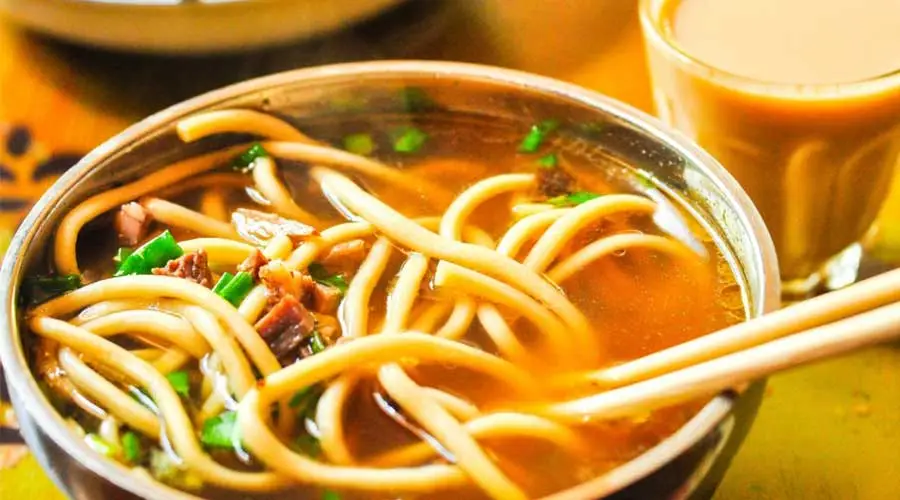
The local dumplings called Momo are warmer and softer, and normally filled with vegetables. Barley flour, wheat flour, breads, soups, and noodles prepared using wheat or barley are staples as well.
Pilgrims usually share food in small tea houses or monasteries and share a cup of yak butter tea and tell stories.
The salty, buttery flavour of the tea can take you by surprise at first, but soon feel warm and comforting as you hike and hike.
Each meal is an occasion to take a break, to bring closer, and to absorb the lifestyle of the region, and it reveals the very thing that in Tibet, food has nothing to do with being a source of energy; it is culture, community, and an expression of faith.
Mani Stones and Prayer flags
Mani stones are the rocks with images and writings carved on them that are a symbol of Buddhist faith and peace.
Prayer flags are colored cloth with scriptures written on them and are a way to protect the people who live nearby.
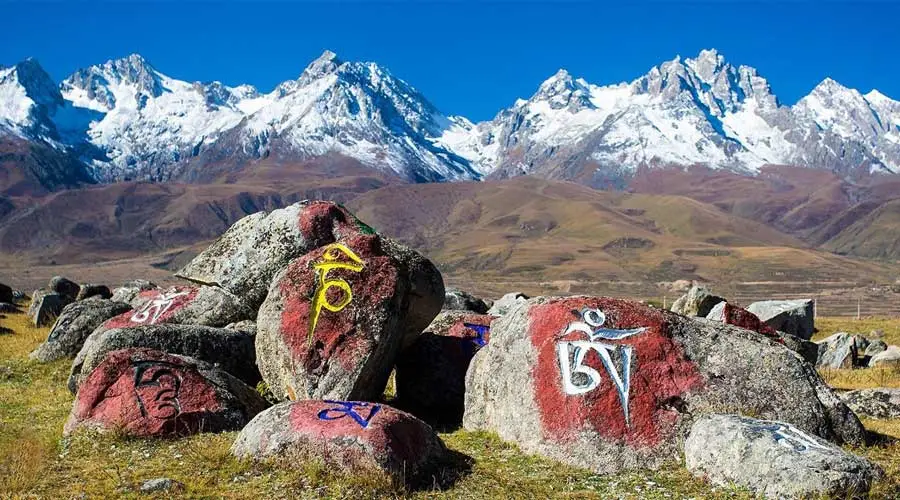
When you traverse along the trails of Kailash and Mansarovar, you cannot ignore the colors fluttering prayer flags against the wind. Prayers and blessings are given to each flag, and as the wind blows over the mountains, its goodwill flies.
Each flag and each stone represent a tale of pending, devotion, and harmony, making everything, even the simplest moments.
Send an Enquiry
Error: Contact form not found.
© 2025 - Himalayan Trekking and Tours (P) Ltd. All Rights Reserved.

